
Many of you will be familiar with the 12-bar blues, but you may not know that it’s also one of the most common progressions in jazz music, too. With a few stylistic tweaks, Cecil Alexander will teach you how to turn this simple blues format into something even the snootiest jazz cats will be clicking their fingers to.
This etude incorporates bebop scales, arpeggios, and, of course, our faithful blues scale. You’ll also pick up a few of Cecil’s go-to improvisational ideas along the way.
There’s a lot to learn here, and it’s fairly advanced stuff, so we’ve divided the track into 12-bar chunks to make it a little more digestible. As with all challenging material, take it slowly and perhaps start by choosing a handful of your favourite licks from the track and focusing on those before piecing it all together.
Right, grab your guitar, warm up those fingers, and let’s get started!
Example 1. Building blues motifs
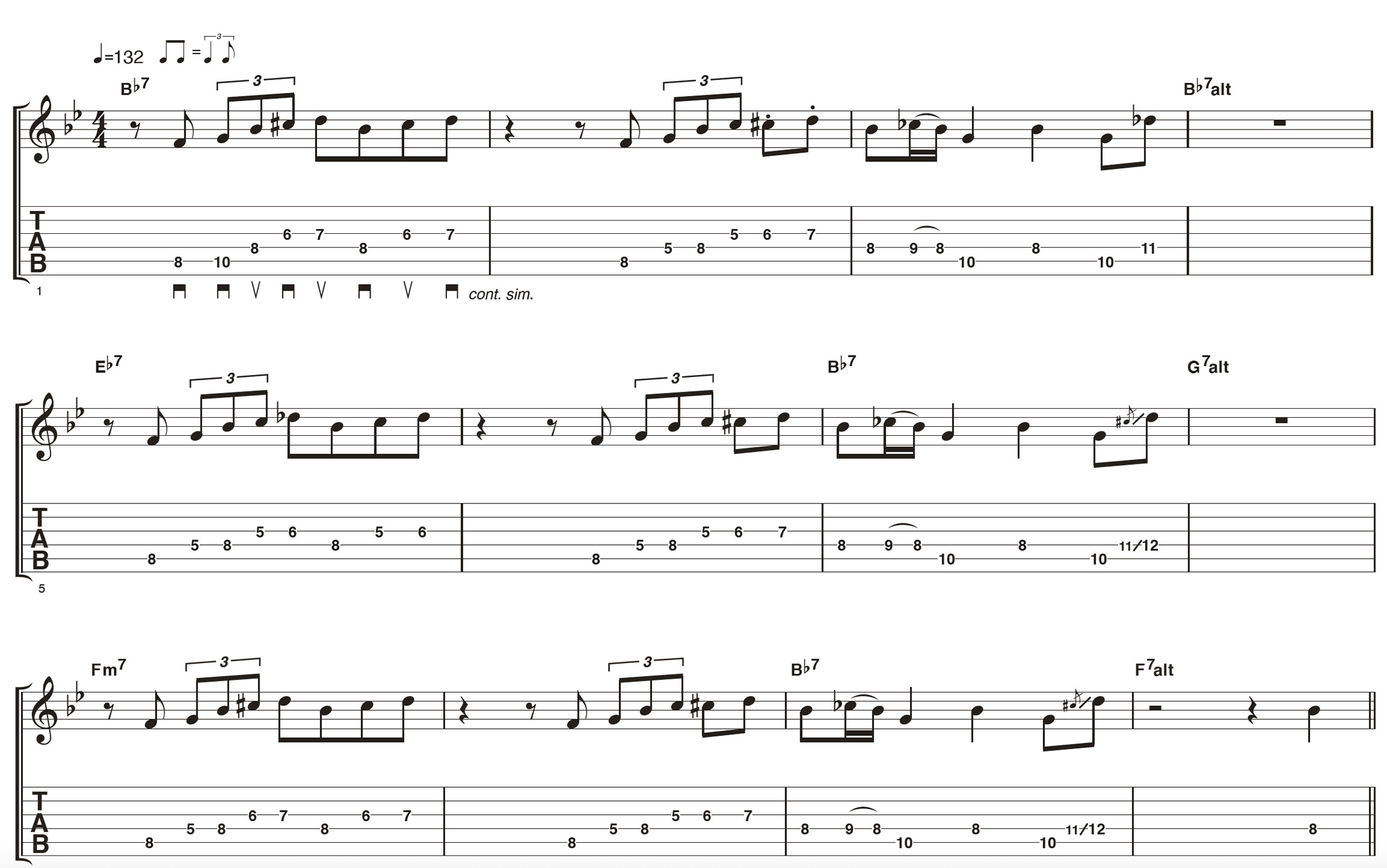
In the first couple of bars, Cecil starts by building some basic blues motifs using the Bb blues and major pentatonic scales. Motifs are mini melodies that you can craft a solo around, helping to create a theme that you can build upon. Check out Cecil’s first motifs and notice that he comes back to them later on.
Example 2. Using doublestops
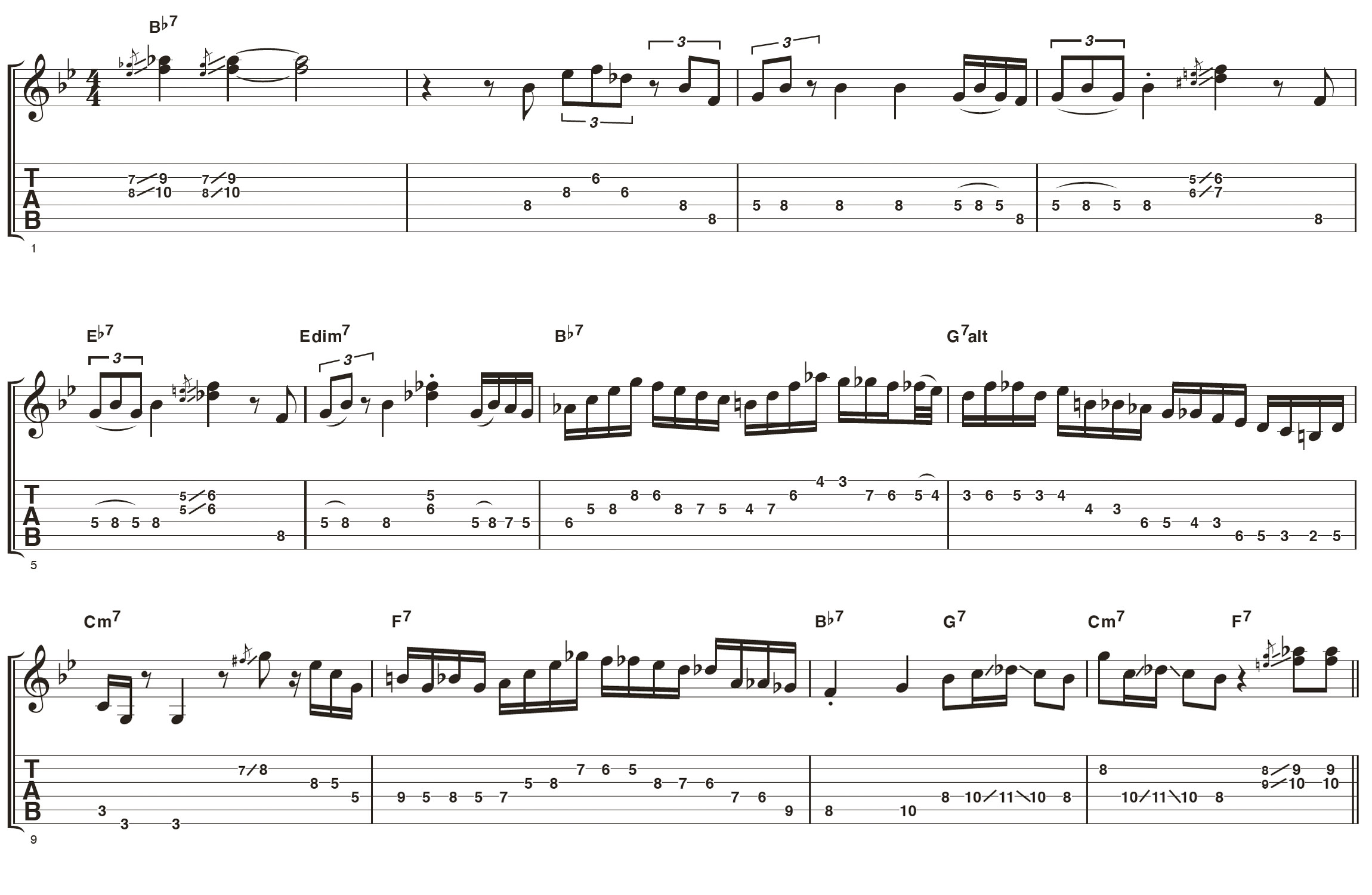
Doublestops (two notes played together) are a handy way of harmonising the most effective notes in a melody and thickening the texture. You’ll hear three doublestop lines that have been altered slightly to outline the I (Bb7), IV (Eb7), and bV (Edim7) chords heard in the blues progression.
Example 3. Creating a II-V change to the IV chord
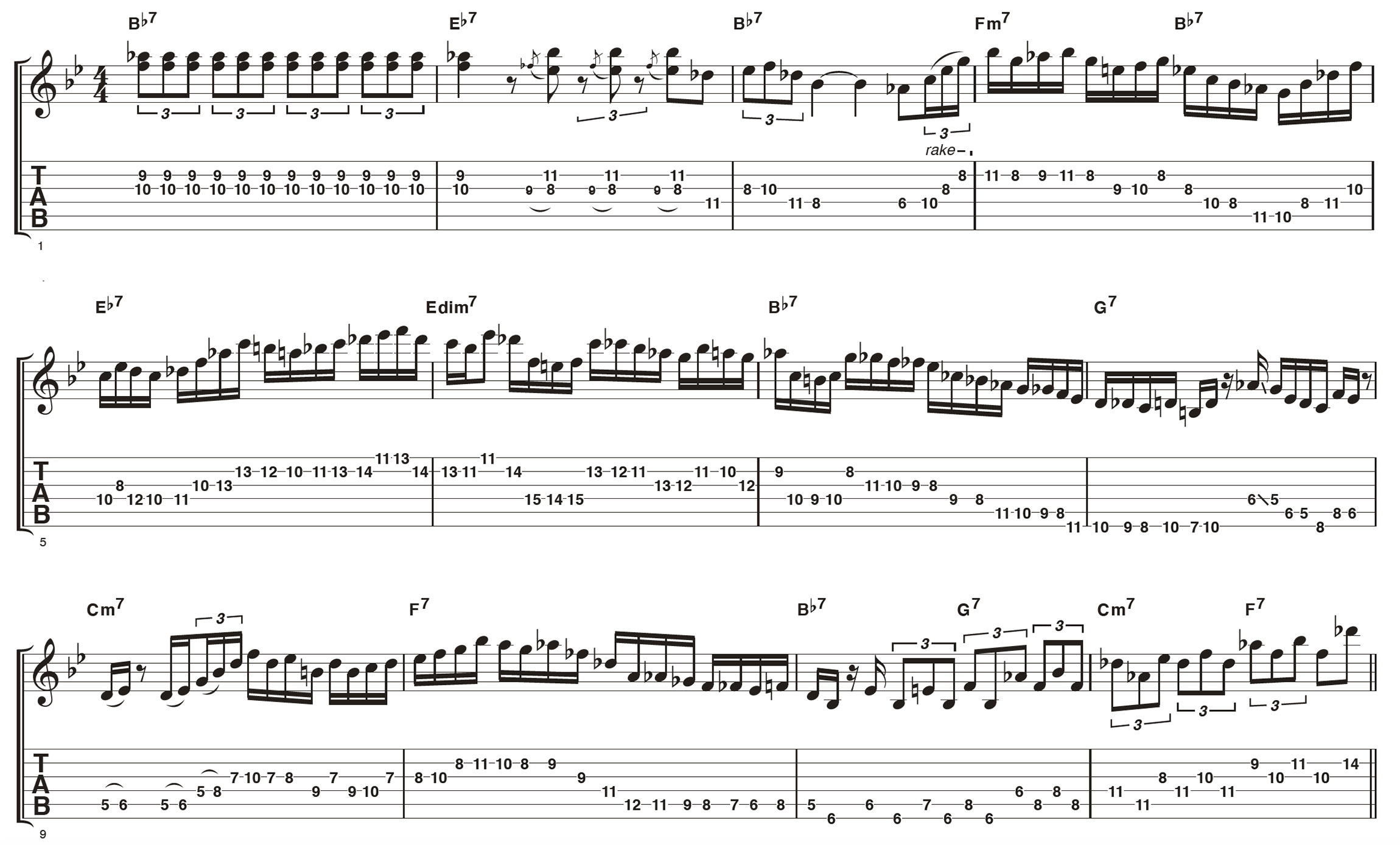
A II-V means using chords built on the second and fifth scale notes in the key – and it’s a core jazz concept. Scooby Blues is in Bb (Bb C D Eb F G A) so a II-V progression would use C and F chords one after the other.
You can also throw in a II-V even if they’re not really there! In bar 4, Cecil creates a mini II-V progression to land on the Eb7 in bar 5. So, treating Eb as your root F and Bb are the II and V respectively.
Example 4. Switching key centers on the descent
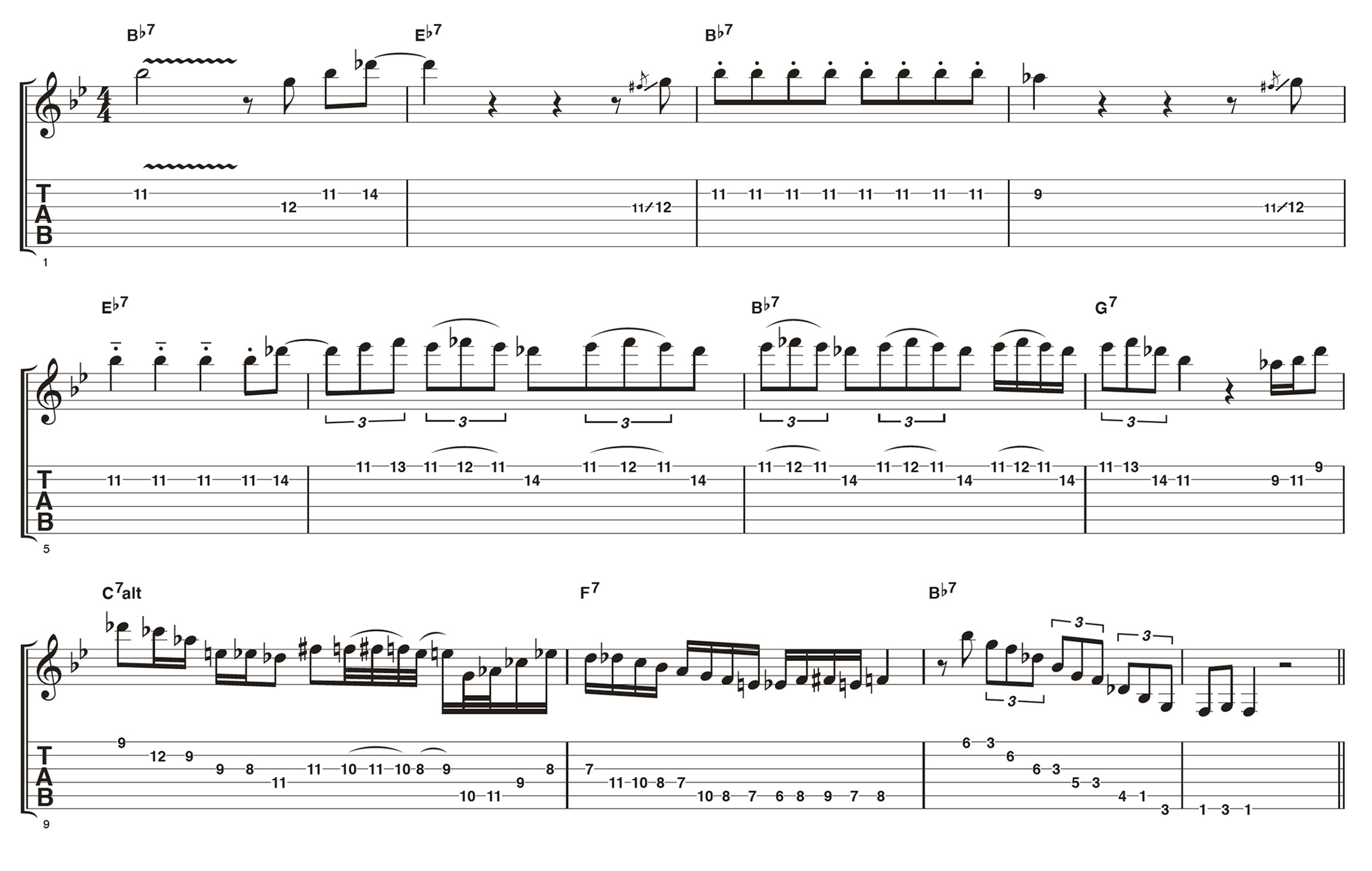
Cecil’s final flourish is on the descent back to the last II-V (C7-F7 – the second and fifth steps in the track’s key of Bb). This lick is built over E major and falls by a half step to the V chord (F7).
Example 5. Final verse
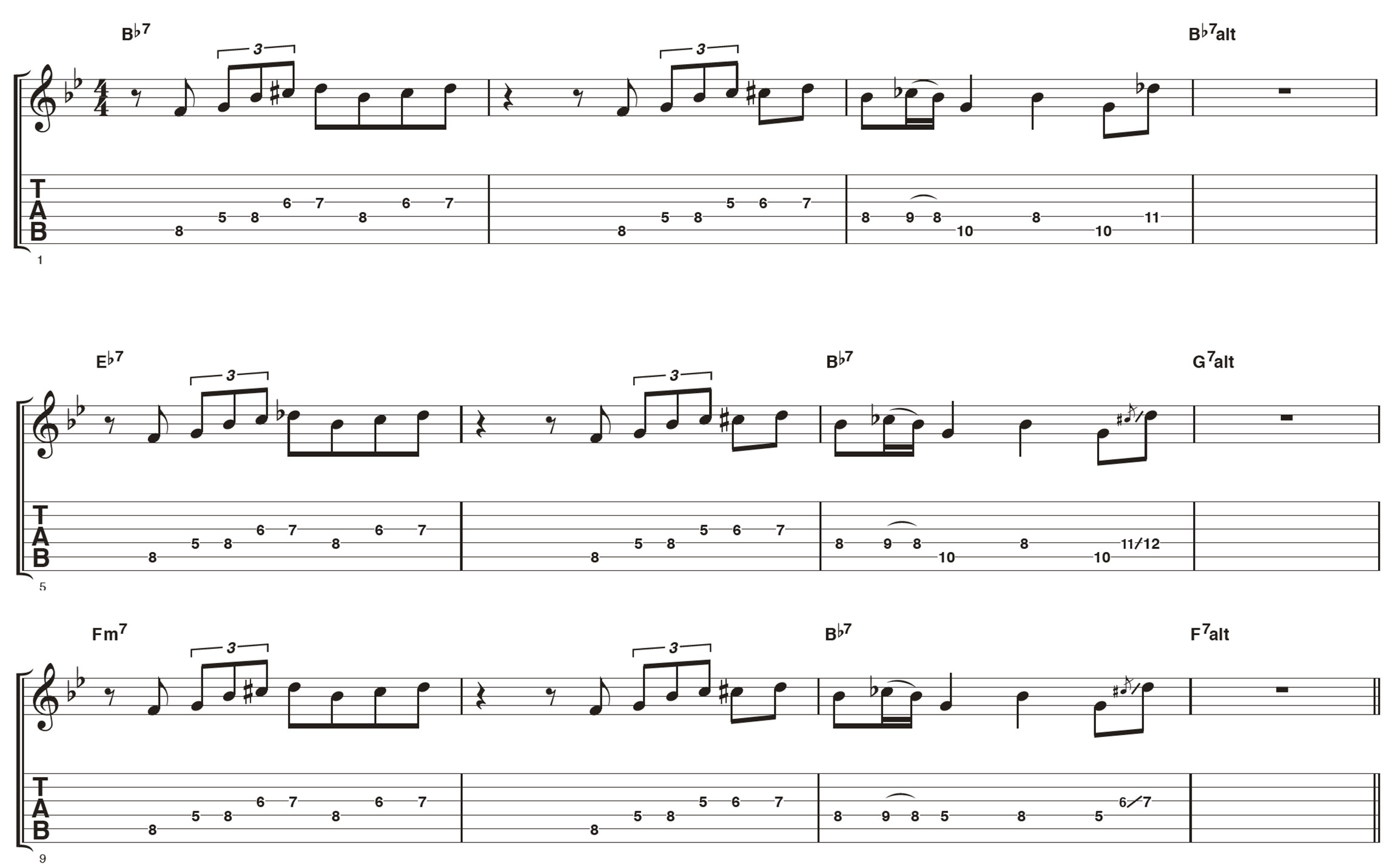
This is essentially a repeat of the opening 12 bars of the track as Cecil returns to the Bb blues/major pentatonic lick he began with, so the same rules apply. Watch out for some slight phrasing variations in Cecil’s performance.
- Get access to the world’s best online guitar courses and reach your guitar goals with structured lessons and personalised feedback from pro instructors. Pickup Music even offer a 14-day free trial so you can take a look before you buy.







